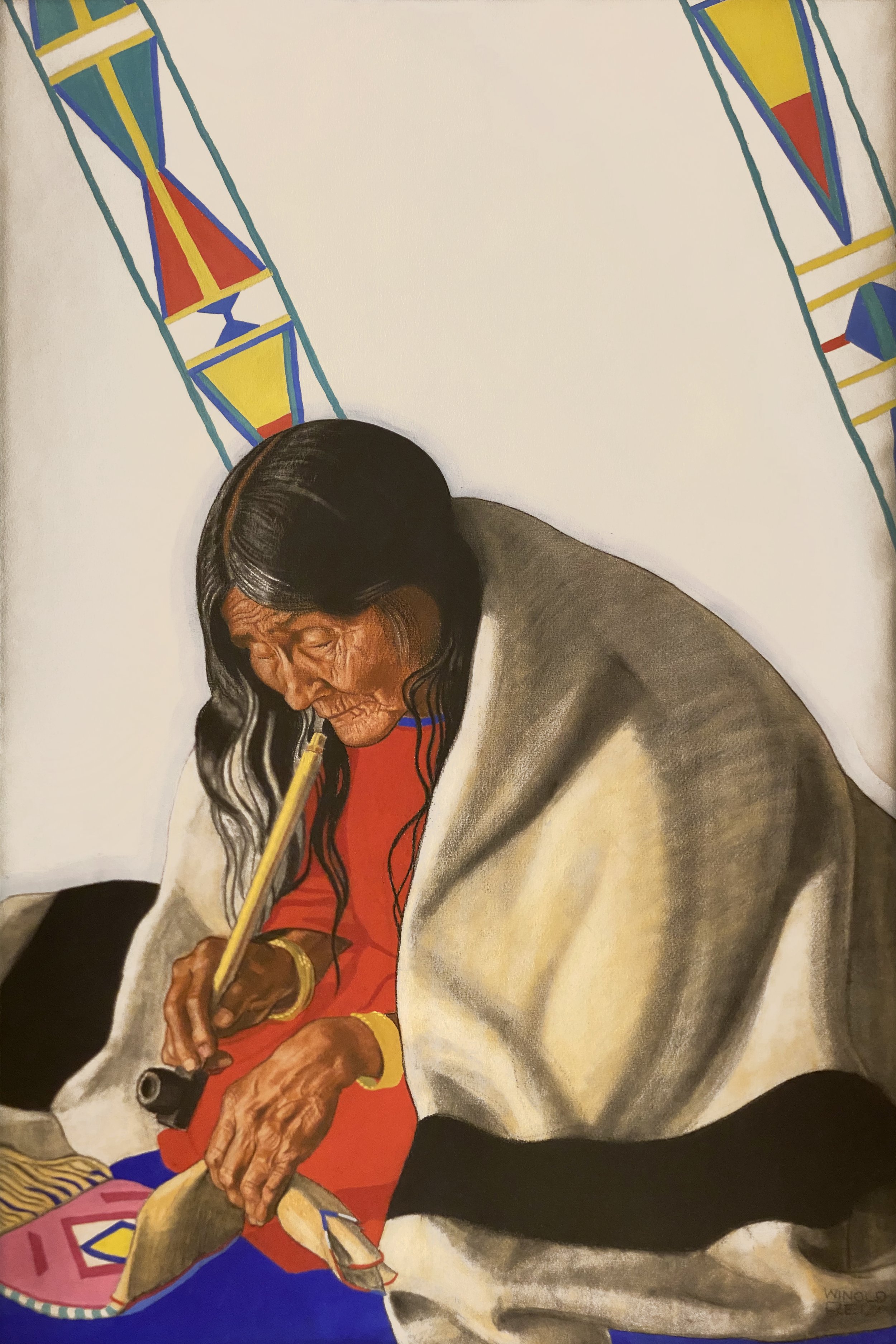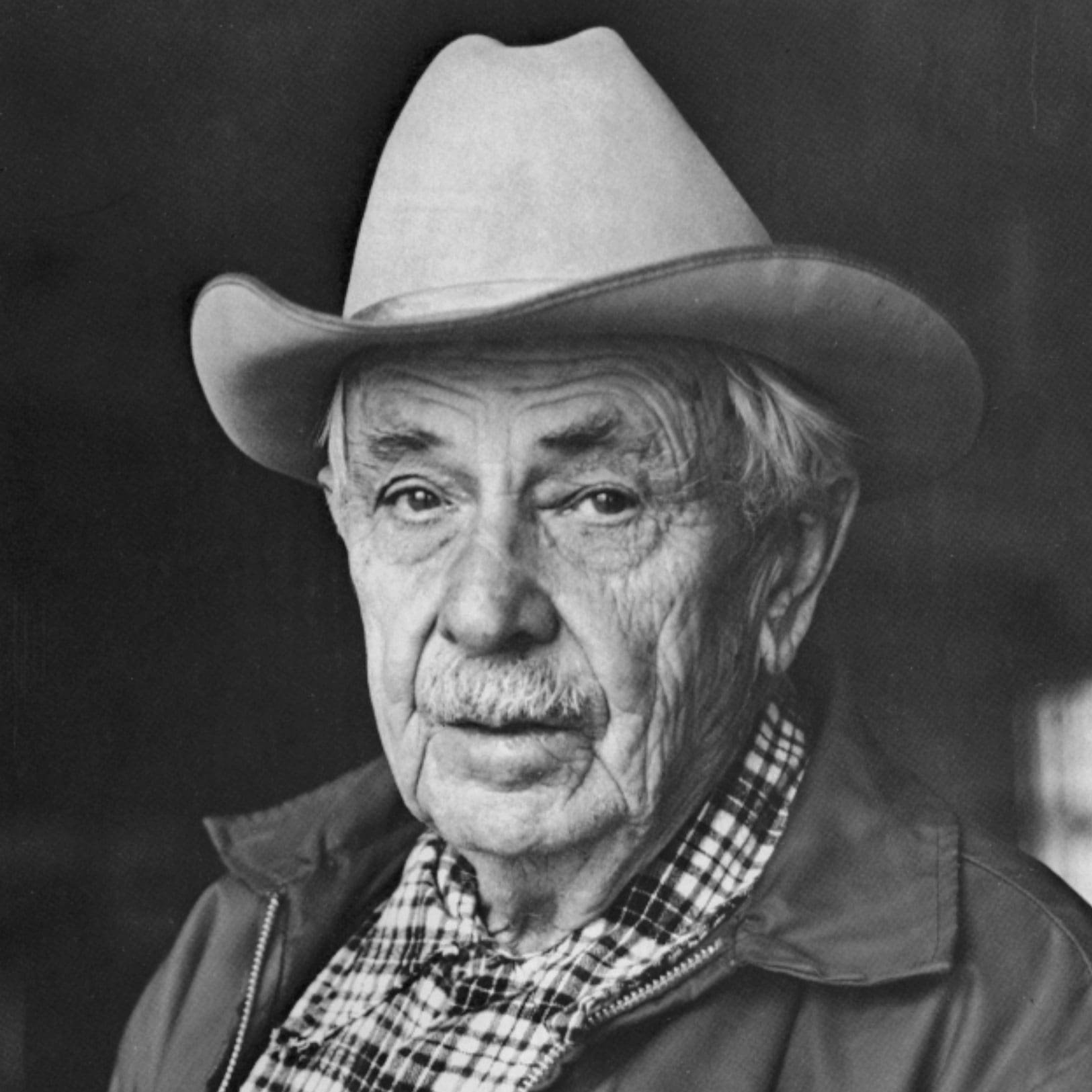With over thirty years of experience, Claggett/Rey Gallery is often trusted with the facilitation of historical pieces of fine art from various estates and individuals across the country.
View our current collection of special acquisitions below.
Click pieces for a larger view.
For inquiries and pricing, please contact us at 970-476-9350
Nick Eggenhofer
(1897–1985)
Eggenhofer was an illustrator of pulp magazines like Western Story Magazine from 1920 to 1950. He also illustrated over 50 Western-themed books. He became known as "the dean of Western illustrators."
Eggenhofer became a painter in the late 1950s, and he moved his studio to Cody, Wyoming in 1961. He painted and sculpted the American West, including horses, mules, cowboys and Native Americans. He exhibited his work at the Buffalo Bill Center of the West in Cody, Wyoming in 1975 and 1981, and at the Museum of Western Art in Kerrville, Texas in January 1985. He was a member of the Cowboy Artists of America from 1970 to 1974, and he won the Trustees Gold Medal from the National Cowboy & Western Heritage Museum in Oklahoma City, Oklahoma in 1973.
Eggenhofer authored two books, including an autobiography.
“The Freighter”
Nick Eggenhofer
10"×30" | Gouache
Paul Lauritz
(1889–1975)
Paul Lauritz was born at Larvik, Norway. He was the son of Lauritz Olsen and his wife Maren Sofie. He first moved to Vancouver, Canada at age 16 to live with relatives. He worked his way west as a commercial artist in Vancouver and Portland before moving to Alaska during the Gold Rush. In 1919, he moved to Los Angeles and opened a studio at the Lyceum Theatre. Besides painting, he also taught at the Chouinard Art Institute and the Otis Art Institute, and he was the president of the California Art Club.
His work is in the permanent collections of the Crocker Art Museum and the Los Angeles County Museum of Art. He is represented at The Irvine Museum, San Diego Museum of Art and Carnegie Art Museum (Oxnard, California).
“Meandering Stream Through Snow Covered Hills”
Paul Lauritz
30"×36" | Oil
W.R. Leigh
(1866–1955)
William Robinson Leigh was born in Berkeley County, West Virginia and began drawing at an early age. When he was twelve, W.W. Corcoran (founder of the Corcoran Gallery of Art) paid Leigh $100 for a drawing. After three years of training at the Maryland Institute of Art in Baltimore, he left for Europe to study. Most of his twelve years in Europe were spent studying at the Royal Academy in Munich. In 1897, after Leigh returned to New York, he made his reputation as an illustrator for leading national magazines.
Leigh fulfilled a childhood dream of going west when Schribner’s sent him to North Dakota on assignment. During the next twenty-nine years, Leigh returned to the west often, sometimes on assignments and sometimes on his own. Some of his favorite subjects were the lands of the Hopi and the Navajo. He painted with the southwestern palette of soft pinks, purples, reds, blues, and yellows. The critics who had never been west, complained that his colors were too brilliant and ostentatious. Critics’ initial hesitancy aside, Leigh has become one of the most celebrated painters to capture the American west, noted for both his contributions to both illustration and fine art.
“Moki Girl Looking Over Canyon”
W.R. Leigh
10"×13" | Oil
Leigh is renowned for his respectful approach to American Indians — noted for capturing everyday events which often acted as his greatest inspiration. Leigh’s reverence led him to be able to participate in the daily lives of the Hopis, attending Kachina ceremonial dances, sharing their food and observing their arts and crafts. Hopi artisans, noted for traveling vast distances to find specific materials, inspired Leigh to also reach for perfection in his work.
“Water Girl at Walpi”
W.R. Leigh
33"×22" | Oil | Sold
Alfred Jacob Miller
(1810–1874)
Miller was born in Baltimore, Maryland, the eldest of nine children of George W. and Harriet J. Miller. Miller’s father was a merchant and tavern keeper in central Baltimore, and also had a farm in Hawkins Point. Miller attended a private school in Baltimore, John D. Craig’s Academy, but did not receive formal art instruction there. He may have received his first lessons in art from Thomas Sully. In 1832, with the financial support of his family and art patrons in Baltimore, Miller traveled to Paris to study art. He was admitted as an auditor to life drawing classes at the École des Beaux-Arts, and copied paintings in the collections of the Louvre.In 1833, he traveled to Italy, visiting Bologna, Florence, and Venice before settling in Rome, where he studies at the English Life School.During his travels in Europe, he became friends with the Danish sculptor Bertel Thorwaldsen and studied with the French painter Horace Vernet.
He returned to Baltimore in 1834, where he opened a downtown studio and advertised himself as a painter of portraits and Old Master copies. Professional and financial difficulties may have prompted his decision to move to New Orleans in 1837. The city was a relatively open market for artists, and Miller quickly established a studio on Chartes Street and began receiving orders for portraits. It was in his studio that he met the Scottish aristocrat and adventurer, Sir William Drummond Stewart.
Stewart hired Miller to accompany him and record his hunting journey to the Rocky Mountains.That same year, along with representatives of the American Fur Company, they ventured as far as Fort William and Green River.
After returning to New Orleans later that year, Miller started working up his sketches in watercolors and oils. The scenes and incidents of the hunting journey were the foundation of a series of paintings documenting Native Americans of the United States. In July 1838 Miller was able to arrange an exhibition in New Orleans. In October 1840 he traveled with his paintings to Stewart’s Murthly Castle in Scotland, where a collection of his commissioned work was ultimately hung.
After spending a year in Scotland and another in London, Miller returned to Baltimore in April 1842. He established himself as an acknowledged portrait artist in the city. He died on June 26, 1874.
The “Portrait of the Captain Stewart With Indians by Campfire” captures a moment of quiet negotiations, planning, or possible storytelling around the firelight. Stewart was a distinguished member at any rendezvous and was often surrounded by trappers and Indians. Miller captured a glimpse of nuance in the historical adventures of westward visions in this gem of a painting.
“Portrait Of Captain Stewart With Indians by Campfire”
Alfred Jacob Miller
8.78"×6" | Oil | Sold
Winold Reiss
(1886–1953)
F. Winold Reiss was a German-born American artist and graphic designer. He was born in Karlsruhe, Germany, the second son of Fritz Reiss (1857–1914) and his wife. He grew up surrounded by art, as his father was a well-known landscape artist and his brother became a sculptor.
Reiss became a portraitist. His philosophy was that an artist must travel to find the most interesting subjects; influenced by his father and his own curiosity, he drew subjects from many peoples and walks of life. In 1913 he immigrated to the United States, where he was able to follow his interest in Native Americans. In 1920 he went West for the first time, working for a lengthy period on the Blackfeet Reservation. Over the years Reiss painted more than 250 works depicting Native Americans. These paintings by Reiss became known more widely beginning in the 1920 and to the 1950s, when the Great Northern Railway commissioned Reiss to do paintings of the Blackfeet which were then distributed widely as lithographed reproductions on Great Northern calendars. In 1931, and 1934-37, Reiss organized a summer art school, also referred to as an artists’ colony near Glacier National Park.
“Long Time Calf Woman”
Winold Reiss
39"×26" | Mixed Media
“Monday Morning”
Winold Reiss
18"×24" | Mixed Media






